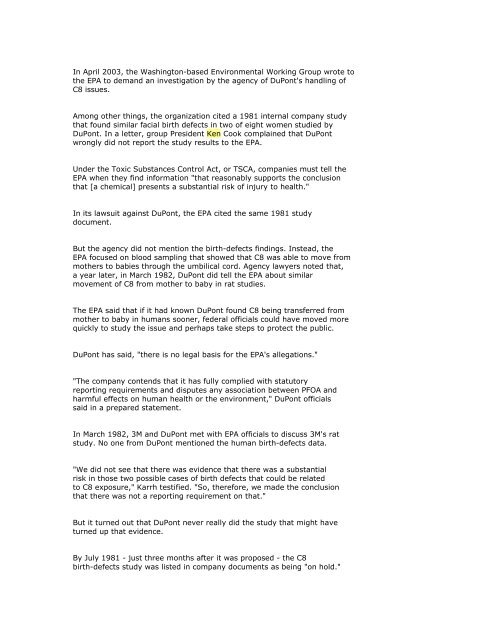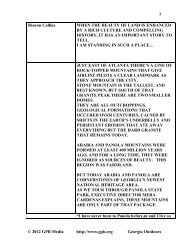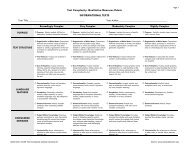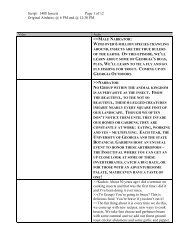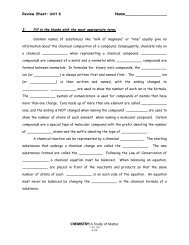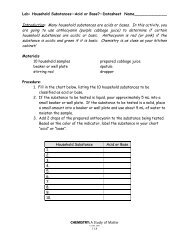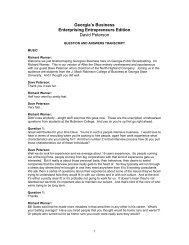PFOA stories
PFOA stories
PFOA stories
- No tags were found...
You also want an ePaper? Increase the reach of your titles
YUMPU automatically turns print PDFs into web optimized ePapers that Google loves.
In April 2003, the Washington-based Environmental Working Group wrote tothe EPA to demand an investigation by the agency of DuPont's handling ofC8 issues.Among other things, the organization cited a 1981 internal company studythat found similar facial birth defects in two of eight women studied byDuPont. In a letter, group President Ken Cook complained that DuPontwrongly did not report the study results to the EPA.Under the Toxic Substances Control Act, or TSCA, companies must tell theEPA when they find information "that reasonably supports the conclusionthat [a chemical] presents a substantial risk of injury to health."In its lawsuit against DuPont, the EPA cited the same 1981 studydocument.But the agency did not mention the birth-defects findings. Instead, theEPA focused on blood sampling that showed that C8 was able to move frommothers to babies through the umbilical cord. Agency lawyers noted that,a year later, in March 1982, DuPont did tell the EPA about similarmovement of C8 from mother to baby in rat studies.The EPA said that if it had known DuPont found C8 being transferred frommother to baby in humans sooner, federal officials could have moved morequickly to study the issue and perhaps take steps to protect the public.DuPont has said, "there is no legal basis for the EPA's allegations.""The company contends that it has fully complied with statutoryreporting requirements and disputes any association between <strong>PFOA</strong> andharmful effects on human health or the environment," DuPont officialssaid in a prepared statement.In March 1982, 3M and DuPont met with EPA officials to discuss 3M's ratstudy. No one from DuPont mentioned the human birth-defects data."We did not see that there was evidence that there was a substantialrisk in those two possible cases of birth defects that could be relatedto C8 exposure," Karrh testified. "So, therefore, we made the conclusionthat there was not a reporting requirement on that."But it turned out that DuPont never really did the study that might haveturned up that evidence.By July 1981 - just three months after it was proposed - the C8birth-defects study was listed in company documents as being "on hold."


